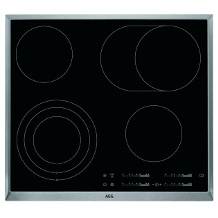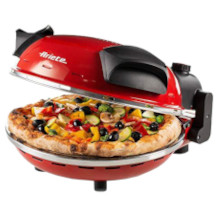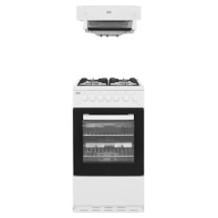Oven purchasing advice: how to choose the right product
- What you need to know
- Most ovens are electrically powered models. However, gas and induction ovens are also available.
- A telescopic pull-out or a drawer door simplify the handling of the baking tray and rack.
- For easier cleaning, models with hydrolysis, catalysis or pyrolysis functions are suitable.
- Depending on the dish, you can choose between different programmes, including 3D and 4D hot air, steam cooking and sabbath mode.
On your marks, get set, BAKE!
When the spicy aroma of a hearty roast rises in the kitchen or the aroma of freshly baked cake hits your nose, these are usually signs that your home oven is running at full blast. It offers you various possibilities for cooking, baking, and reheating food, and it should therefore have a place in every kitchen.
Even though all ovens are the same in their basic function and serve to heat food, there are major differences between the various models. Modern ovens not only have a wide range of heating functions that can be used to prepare any dish perfectly, but also various extras that make your work in the kitchen easier, such as telescopic pull-outs, slide and hide doors, and self-cleaning programs.
Advantages
- Different heating functions for different purposes
- Optimal heat generation and distribution
- Fast reheating of finished dishes
- Self-cleaning programs and cleaning aids
Disadvantages
- Power guzzler
- Possible flavor transfer with different foods in the oven
What is the difference between an oven and a stove?
An oven is an independent built-in appliance without a hob above it. A stove, on the other hand, is characterized by the fact that the existing oven is inseparably connected to a hob.
The oven
Since an oven doesn’t have a hob, the appliance doesn’t necessarily have to be located below the countertop. Instead, you can install the oven in a tall cabinet at eye level, for example. On the front of the oven you will find controls that you can use to start it. Since there is no hob, no further settings are required. The great advantage of having just an oven is that you are free to design your kitchen: the oven and hob can be placed independently of each other in the kitchen. The classic variant of installing the oven below the hob is also possible. If the lower edge of the oven is about 4 to 6 inches (10 to 15 cm) below your elbow, the appliance is at eye level and in an ergonomically ideal position. This way, you don’t have to bend down to look into the oven, nor to take out the baking tray.
If you decide to have a separate oven but still want a hob, an oven set is recommended. The appliances in the set match each other visually, but can be installed independently of each other because they have their own connections and controls.
The stove
A stove consists of an oven and a hob. At the front of the stove are the controls for both individual appliances, which form a technical unit. Hence, you also control the hob via the front of the oven section. The stove can often be installed in a base cabinet so that the hob can be integrated into the countertop above. Like conventional ovens, the various models have an interior volume of 1.06 to 2.83 cu ft (30 to 80 liters).
Plenty of room for hot air
The cavity volume of an oven is expressed in cubic feet or liters. Large models usually have a cavity volume of 2.47 cu ft (70 l) or more, while smaller models only offer between 1.06 and 2.12 cu ft (30 and 60 liters).
Different oven types
If you have decided to buy an oven, you should first consider what type of oven you prefer. The decision is not only based on personal preference, but also on what is actually feasible in your kitchen.
The electric oven
Electric ovens are the most widespread today. Therefore, the following guide will mainly deal with this type of model.
The gas oven
Gas ovens are powered by the gas that gives them their name. The gas is burnt, which produces heat. You usually have to connect a gas oven to a gas socket, but in some places gas cylinders are still common. Due to low gas prices and high energy efficiency, gas ovens have comparatively low follow-up costs.
Advantages
- No heating up or preheating necessary
- Low energy costs
Disadvantages
- Difficult temperature regulation
The induction oven
This type of oven works by induction. The difference to other types of ovens is that the appliance generates heat directly in the cooking vessel and the heat doesn’t affect the food exclusively from the outside. Place the induction insert made of glass ceramic in the oven and let it snap into place on the back wall of the oven. This automatically switches the appliance to induction mode: an oscillating magnetic field passes through the glass ceramic plate without any loss of energy and generates heat directly in the cooking vessel or baking dish by electromagnetic induction. However, you can also use the conventional heating functions, as a heating coil is also built in.
Please note that you need dishes with ferromagnetic properties to use induction ovens. Induction cookware is usually marked with a symbol. You can easily check the induction suitability yourself: due to a ferromagnetic layer on the underside of the crockery, magnets stick to it. Induction ovens are still relatively new, which is why they are rather a rarity on the oven market. Manufacturers often add an induction option to their models so you can use it as needed.
Advantages
- Fast heating or preheating
- Even heat distribution
- No burning
- Less heat radiation to the kitchen environment
Disadvantages
- Special cookware required
- Higher purchase costs
The mini oven
This model is defined solely by its size. The cavity capacity of mini ovens is between 1.06 and 1.77 cu ft (30 and 50 liters). This makes them a good alternative, especially for apartments with small kitchens. Even if they don’t have the same range of functions as their larger counterparts, they at least offer the basic functions, such as convection and top and bottom heat.
Advantages
- Considerably cheaper
- Space-saving
Disadvantages
- Fewer functions
- Smaller cavity capacity
The oven as a right hand
The various oven models differ not only in their design, but also in their functions. A well thought-out oven design and a wide selection of different programs for heating food are very helpful when cooking.
The controls
Every oven has a row of controls above the door. These are usually rotary controls that allow you to set the heating function and temperature. In newer models, the controls can be retracted and brought out again by pressing softly. Some modern ovens already have touchscreen controls: the rotary controls are no longer needed and the oven can be conveniently operated by touch command via a high-resolution display.
Some ovens are WiFi-capable and can be controlled via app. This allows you to change the settings of the appliance even when you are on the move. Nerve-racking mental games about whether you have accidentally left the oven on are now a thing of the past. With the help of the manufacturer’s apps, you can also discover new recipes and send them directly to your oven. It saves them, including the required program and temperature settings.
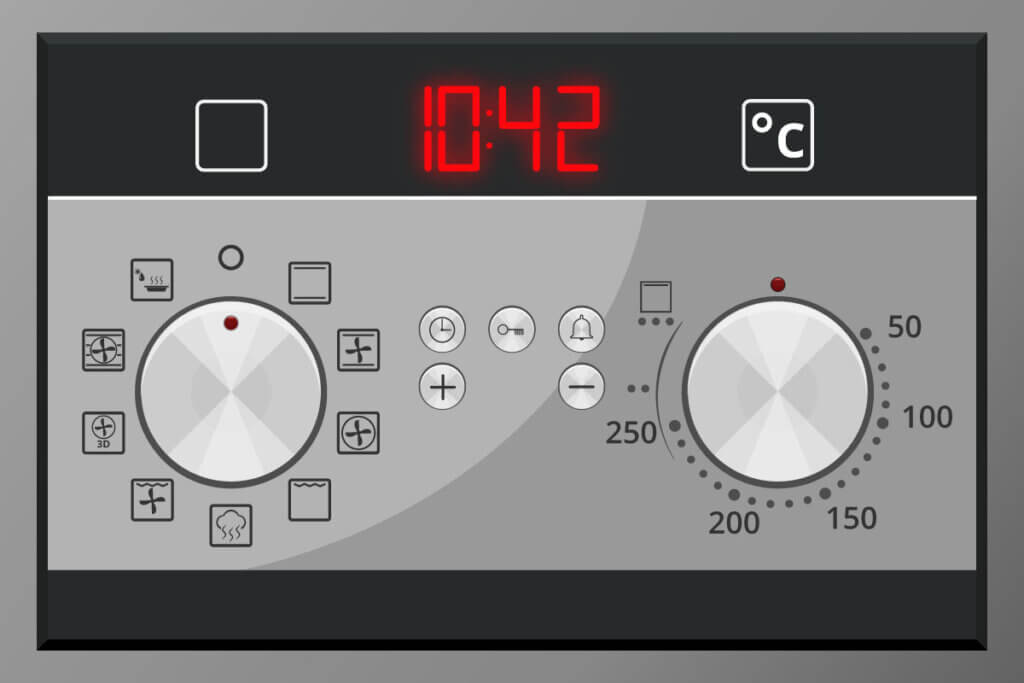
The telescopic pull-out
With a telescopic oven, you place the tray or rack on telescopic arms that you slide into the oven over a rail. The principle of operation is similar to a drawer. This means you do not have to bend down to pull out the baking tray or rack, and you benefit from greater ease of use. In addition, telescopic pull-outs prevent the tray from tilting unintentionally when you pull it out.
Most ovens have two to three such pull-outs; either as a full pull-out or as a partial pull-out. With the former, you can pull the tray or rack completely out of the oven. With the latter, the telescopic arms can only be pulled halfway out of the oven; you can still place the tray on top.
The drawer door
If the oven is slide-in, a drawer door is an alternative to the telescopic pull-out. Here, you pull the door out of the oven together with the rack or baking tray, which are mounted in holders on the inside of the door. It works like a regular drawer and is particularly ergonomic.
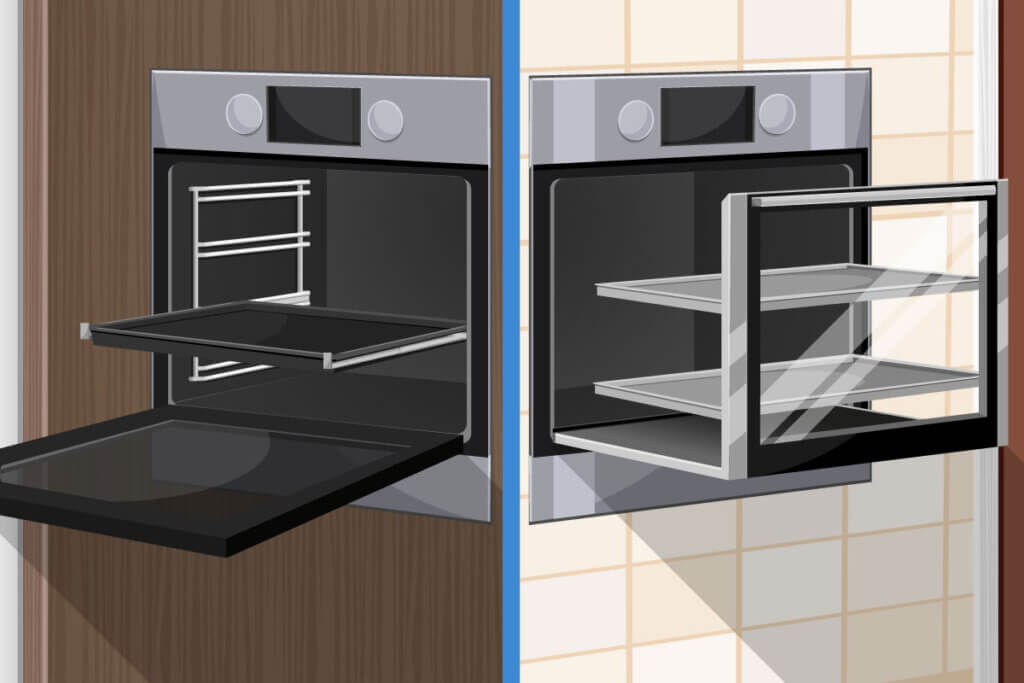
Some of the most important features
The following functions can not only make it easier for you to operate your oven, but also increase its effectiveness.

Automatic programs
With an automatic program, you only need to tell the oven what you want to bake or cook in the oven. The appliance then determines the appropriate heating mode, temperature, and cooking time. To make the specifications as detailed as possible and prevent misunderstandings, you can add additional information such as the weight of the food. The automatic program selection is particularly suitable for cooking and baking beginners, but also for those who want to save time when cooking.
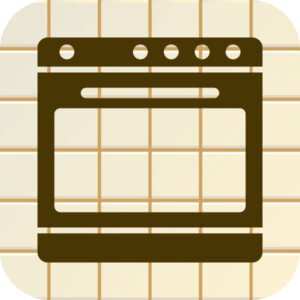
The oven door
Most ovens have a simple hinged door. Alternatively, there are doors that open to the side; this is especially possible with mini ovens or other appliances that are at eye level. Slide and hide doors are particularly practical as they disappear underneath the oven, giving you more room to move around the kitchen. Rather new in private households are French doors that have two wings that open like a closet.
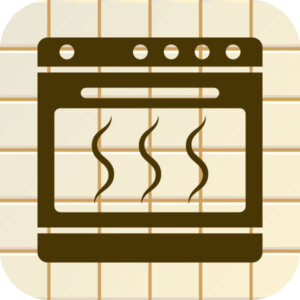
The quick heat-up
Ovens with a quick-heat function combine several heating modes to shorten the heating or preheating time. As soon as the optimal temperature is reached, the appliance switches back to the heating mode you have selected. The correct temperature is reached shortly after you turn on the oven. Thanks to the quick heat-up function, you leave the food in the oven only as long as necessary and save electricity.

The child safety lock
In an oven with a child lock, the buttons can be locked. Thanks to the childproof lock, the control panel can therefore neither be operated intentionally nor unintentionally by children. This also prevents you from accidentally changing the settings or switching the appliance on or off while cooking. In addition, the oven door should not get too hot. On models with a heat protection window, the maximum door temperature is 30 degrees Celsius (86 °F), rarely 40 degrees Celsius (104 °F).

Accessories
An oven usually comes with a baking tray and a rack on which the food is baked. Make sure that the tray and rack are the right size for your oven. With interior lighting, you can not only take a look at your food while it is baking, but also illuminate the oven during cleaning. For this case, the interior lighting should also work when the oven is not in use.

The timer
With the help of a timer function, you can set the beginning and end of the baking process. You can see the time on the integrated display. In addition, an automatic switch-off function is recommended: if you have not set a time frame, the oven will switch off automatically after a certain time unless you make changes. This is not only energy-saving, but also an important safety feature.
Easy cleaning: the cleaning functions
You should clean your oven regularly, as food residues can be burnt. This, in turn, creates unpleasant odors and reduces the oven’s heat output. Since cleaning an oven can be a tedious task, many manufacturers make the job easier for you: self-cleaning programs and cleaning aids are standard equipment on modern ovens. In addition, new ovens usually have a coating of easy-care enamel, which can be cleaned without much effort, even without the use of chemical cleaning agents.
Hydrolysis
Place a container filled with water and some washing-up liquid in the oven and switch on the steam cleaning function. On some models, there is a bottom tray in the lower part of the oven, into which you put about half a liter of water and a drop of washing-up liquid. The program heats the oven and consequently the water in the vessel. The steam softens food residues, which you can remove with a damp cloth once the oven has cooled down.
Catalysis
Ovens that have a catalysis function have a special ceramic surface. Often only the rear wall of the oven is coated accordingly, but there are also models where the entire interior surface is designed in this way. The coarse pores on the surface absorb fat splashes that evaporate due to the heat during the baking process. Temperatures of around 400 °F (200 °C) are sufficient for this. Self-cleaning takes place automatically during operation. Do not use hard sponges or oven sprays for basic cleaning, as these can damage the coating.
How does pyrolysis work?
You switch on the program after the baking cycle. The interior of the oven is heated to 750 to 950 °F (400 to 500 °C), which almost completely burns off all frying and baking residues. Only the ash remains; you can wipe this up as soon as the oven has cooled down. In this way, even hard-to-reach places and corners of the interior become clean. Special insulation ensures that neither heat nor odors escape to the outside during the pyrolysis process. With some models, you can set the degree of soiling in advance. The process takes about two hours and consumes a lot of electricity, which is why you should only use the mode occasionally. Also bear in mind that you cannot use the oven during this time. The door is locked for safety and can only be opened again when the temperature inside has dropped below a degree set by the manufacturer.
Some leading suppliers use proper names for the programs for self-cleaning and cleaning aids, each of which conceals one of the three functions:
| Manufacturer | Name of programme | Hydrolysis | Catalysis | Pyrolysis |
|---|---|---|---|---|
| Siemens | activeClean | X | X | 🗸 |
| Bosch/ Siemens | EcoClean | X | 🗸 | X |
| Miele | PerfectClean | X | 🗸 | X |
| Neff | EasyClean | 🗸 | X | X |
| Gorenje | AquaClean | 🗸 | X | X |
| Bauknecht | DiamondClean | 🗸 | X | X |
| Beko | SimpleSteam | 🗸 | X | X |
If you prefer not to use a self-cleaning program, you can clean your oven by hand using familiar home remedies. With a few tips and tricks, your oven will look as good as new:
- Lemon juice: fill a casserole with a mixture of water and lemon juice and place it in the oven at 250 °F (120 °C). The soaked stains can then be removed with a damp cloth.
- Table salt: moisten the bottom of the oven and sprinkle a little salt. Set the oven to about 120 °F (50 °C) and wait 45 minutes. You can then wipe out the bottom of the oven with a damp cloth.
- Baking powder: mix about 1/4 cup of baking powder with water and apply the paste to the stains. Leave the mixture to work for 30 to 120 minutes and then remove it with warm water.
- Baking soda: mix some baking soda with water and apply the mixture to the dirty areas. After about 30 minutes, you can wipe out the oven with a damp cloth.
- Vinegar: mix a little vinegar with dishwashing liquid and apply it to the dirty areas. Leave the mixture to soak in for about 30 minutes and then clean the oven with a damp cloth.
The heating modes
The number of operating modes varies from appliance to appliance. The heating mode selected has a great influence on how well a dish turns out. The standard heating modes available in most appliances are convection and top/bottom heat.

Convection
With the convection function, the warm air in the oven is distributed in the interior by means of a fan installed at the back of the appliance. Due to the fast and even swirling in the cooking chamber, users save energy. The function is suitable for intensive and dry roasting as well as baking on all available levels.

Top/bottom heat
With this heating mode, the oven is heated evenly from two sides. Although the heat is not distributed in the interior, it reaches all sides of the food to be baked due to the radiation from both sides. The top and bottom heat function is considered a universal heating mode, suitable for both cakes and roasts. Some oven models have other heating modes. High-end appliances offer up to 30 different methods.

Separate top/bottom heat
Ovens with this function allow you to use the top or bottom heat separately. The top heat function heats the upper part of the oven and is particularly suitable for gratins or casseroles. With separate bottom heat, the lower part of the oven is heated so that the heat affects the underside of the food. This is particularly useful for cakes or pies.

Fan function
In an oven with fan function, a circular heating element is installed in the oven. This radiates warm air, which is then distributed throughout the appliance. In this way, food cooks faster and you save energy. The circular heater also eliminates the need for preheating, as the heat is provided directly. The fan function allows baking on several levels.

Grill
In the grill function, the oven uses a heating element located in the upper part of the appliance. It heats the interior and produces a grill-like heat. This is particularly useful when you want to grill or bake food. The grill function is accordingly useful for casseroles, steaks, or vegetables.

Fan grill
This heating mode combines the normal grill function with the convection or, if necessary, the hot-air function. The heating elements on the sides are combined and the fan distributes the heat in the interior. This function uses very high temperatures so that you can prepare food that is particularly crispy on the outside. Due to the circulating air, the food inside remains soft and juicy.

Pizza mode
The pizza mode also combines two different functions. A fan distributes the bottom heat in the cooking chamber. In this way, the warm air circulates mainly in the lower part of the oven, making the food particularly crispy. So you can enjoy pizza, tarte flambée, and quiche just like from a stone oven.
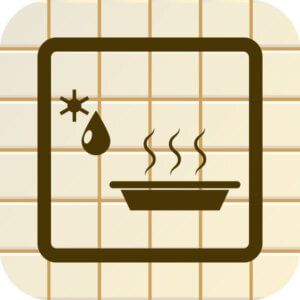
Defrosting and keeping warm
The name says it all when it comes to the ‘Defrost’ and ‘Keep warm’ functions. Select ‘Defrost’ if you want to defrost frozen food. You can also use this function as a substitute for a microwave to heat up ready-made food. You need ‘Keep warm’, for example, if you want the prepared food to remain at the same temperature throughout the evening. This way you do not have to reheat it.
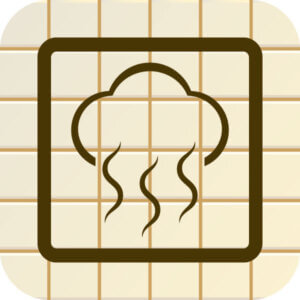
Steam
With the steam baking function, hot water is evaporated in the oven. The steam ensures that loafs of bread or potato wedges, for example, remain crispy on the outside and soft on the inside. Thanks to the gentle preparation, the flavors and vitamins are preserved. The function is particularly relevant for sous-vide cooking, where vacuumed food is usually cooked in a water bath.

Sabbath mode
This very special mode was developed to allow Orthodox Jews to use the oven during Sabbath. You can keep the prepared food warm in the oven before the Sabbath begins. In Sabbath mode, the ovens cancel the automatic switch-off. This allows them to maintain a temperature of 170 to 280 °F (80 to 140 °C) for several days. The dishes stay warm for longer without you having to switch the appliance on or off.
A few tips to save some energy
How efficiently an oven works depends, among other things, on how well it is insulated. If little heat escapes to the outside, it consequently has to use less energy. Since most heat is lost through the viewing window in the door, a multi-glazed version is recommended.
With just a few simple steps, you can save valuable energy when using your oven:
- Do not open the door too often during the baking process. Instead, use the viewing window to check on the food.
- The circulating air function is the most energy-saving. If no other heating mode is explicitly necessary, it is recommended.
- Preheat the oven only when necessary. It’s not necessary for bread rolls or toasts.
- Use the residual heat of the oven, which you can still benefit from about 10 to 15 minutes after switching it off.
The world of ovens
The following manufacturers are considered to be the leaders in the oven market:
Neff
Neff ovens offer the patented Slide&Hide opening mechanism. It allows you to lower the oven door completely under the oven, turning the handle along the way. Some oven models only have the Hide mechanism: the door can be lowered completely under the oven, but you have to reach around because the handle does not turn with it. Inside many Neff ovens is the CircoTherm heating system, which is also patented: a circular heater guides the warm air around the individual levels of the oven at high speed without transferring aromas. The principle is very economical, as less warm air is lost due to the hot air guidance and the two-part fan wheel. In addition, Neff provides its own EasyClean cleaning aid. If that’s not enough, all Neff models can be combined with a pyrolysis function. Prices for a Neff oven range from around $250 to about $3,000.
Siemens
Various Siemens ovens have the so-called varioSpeed function: with the help of an integrated microwave, you can defrost or heat food in no time. You switch on the function in addition to the selected heating mode and thus shorten the preparation time. For frozen food, on the other hand, the Siemens coolStart program is ideal. With this, you can also prepare frozen dishes quickly without preheating and save not only time but also energy. You can use the Siemens cookControl Plus function via the touch display. This is an integrated cookbook in which you can store individual settings for preparing dishes: you select the dish and its weight and the Siemens oven does the rest for you. It selects the optimum heating mode and the ideal temperature. Inexpensive Siemens ovens are available for as little as $300, while the high-end Siemens models cost around $5,000.
Bauknecht
Bauknecht advertises its ovens with Total Steam technology, among other things: this is a steam cooking function that combines hot air and steam. You can choose between three different intensity levels. Depending on the level, the steam content is 25%, 50% or 75%. Thanks to 36 holes on the back panel, the Active Multiflow function enables even distribution of the air flow without convection. The heating power is the same on up to four levels. Bauknecht ovens also make preheating obsolete thanks to a Power convection program. A core temperature sensor measures the heat level and shows it on the display. The display also gives you the option of specifying food categories and the preferred cooking method within the MyMenu program. The oven takes care of everything else and automatically sets the ideal temperature. Bauknecht ovens cost between $250 and $2,500.
Bosch
The manufacturer Bosch also has particularly compact ovens with a height of 18 inches in its range. Bosch appliances are thus particularly practical for small kitchens and suitable for installation in tall cabinets. Double or triple telescopic pull-outs and a drawer door simplify the handling of the Bosch oven, and an optional pyrolysis function reduces cleaning to a minimum. Bosch ovens offer various heating modes, including a multilevel fan function and a sabbath mode. An integrated roast thermometer always tells you the temperature of your dish, so you can readjust if necessary. With the AutoPilot function, the Bosch oven automatically sets the right temperature; all you have to do is set the dish on the display. Bosch ovens are Wi-Fi enabled and can be operated via an app. The various Bosch models cost between $300 and $3,000.
Beko
Beko ovens offer you various heating functions, including a multilevel fan function and steam cooking. While the steam cooking program is running, the humidity in the interior of the Beko appliance is constantly measured and kept high by the oven accordingly. Optionally, you can always regulate it manually. Thanks to SimpleSteam and PractiClean, cleaning a Beko oven is very easy: the former includes a hydrolysis program and the latter describes the particularly easy-to-clean interior of the Beko oven. The entire cooking chamber is made of a single piece, so neither screws nor welds hinder cleaning. In addition, you can remove the side racks and remove any dirt that may have accumulated there. Beko produces comparatively inexpensive ovens that range in price from $150 to $1,000.
AEG
The manufacturer AEG focuses primarily on the steam cooking function in its ovens and offers various settings to introduce you to sous-vide cooking. SteamBoost refers to a multi steam cooker where you can freely combine steam, humidity, and heat depending on the dish. The different steam levels are suitable for all types of food. The SteamCrisp function also relies on a combination of conventional heat and steam: this setting ensures particularly crispy results. AEG ovens with SteamPro have an integrated humidity sensor that ensures that each dish gets the right amount of steam. This function is particularly relevant for sous-vide cooking, in order to optimally steam the vacuumed food. For those who like to bake, the SteamBake function is ideal. Moisture is added to the cooking chamber at the beginning of the baking process so that the dough rises better. To make cleaning easier, AEG offers ovens with a pyrolysis program or with catalytic coating. To keep the outside clean as well, some models are equipped with a special anti-fingerprint coating. AEG offers its ovens for $300 to $3,000.
Miele
Depending on the model, Miele ovens have the unique FoodView feature: there is a camera in the cooking chamber that transmits images to your smartphone. This keeps you informed about the status of your dish at all times and from anywhere. With its proprietary TasteControl and Quick & Gentle functions, Miele guarantees that your dishes are cooked gently as well as evenly and don’t overcook. As soon as you approach the oven, the MotionReact function is activated: a proximity sensor is built into the oven, which switches on the interior lighting and the display. In addition, the signal tones are switched off. A pyrolysis program and the PerfectClean non-stick coating simplify cleaning, as less food residue sticks to the oven. The FlexiClip telescopic runners and SoftOpen & SoftClose function also make handling easier. Miele appliances are priced between $450 and $3,500.
Gorenje
Gorenje ovens are characterized by their HomeMADE shape: the interior is oval-shaped and modelled on traditional stone ovens. The shape allows the air to circulate freely. The MultiFlow 360° technology also guarantees optimal air circulation, which is facilitated by the ventilation slots on the rear wall. The interior is particularly generously designed and enlarged towards the top. To prevent the air around the oven from getting too hot, Gorenje ovens have a cooling system that mixes hot air with cold air and thus also effectively cools the front pane. The DC+ automatic post-cooling system runs after the baking process until the interior temperature is less than 60 degrees Celsius. The interior is coated with enamel and is particularly stable. It is also easy to clean; you can choose between a pyrolysis and a hydrolysis program. To simplify handling, the door closes automatically with a light tap thanks to the GentleClose function. Gorenje ovens are comparatively inexpensive and cost between $150 and $1,500.
Images 1-18: © FinalCheck

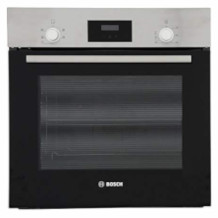
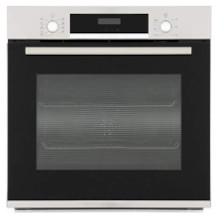
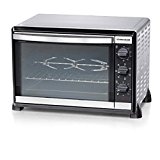
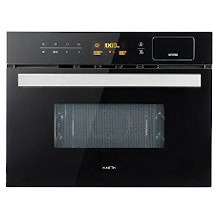
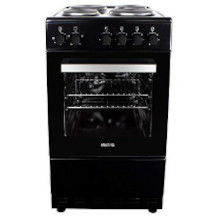
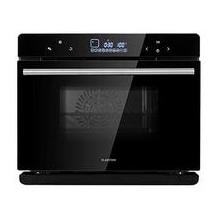
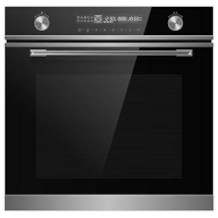
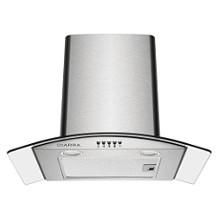
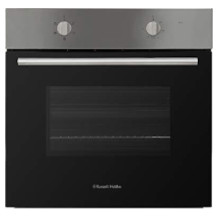
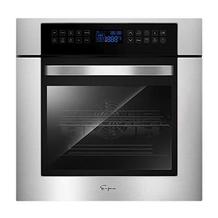
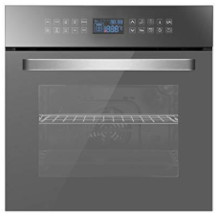
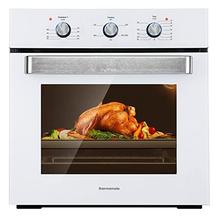
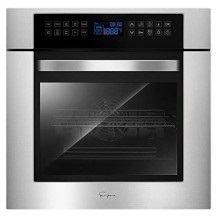
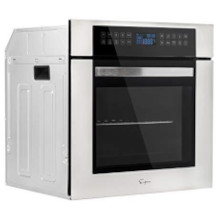

 180 reviews
180 reviews
